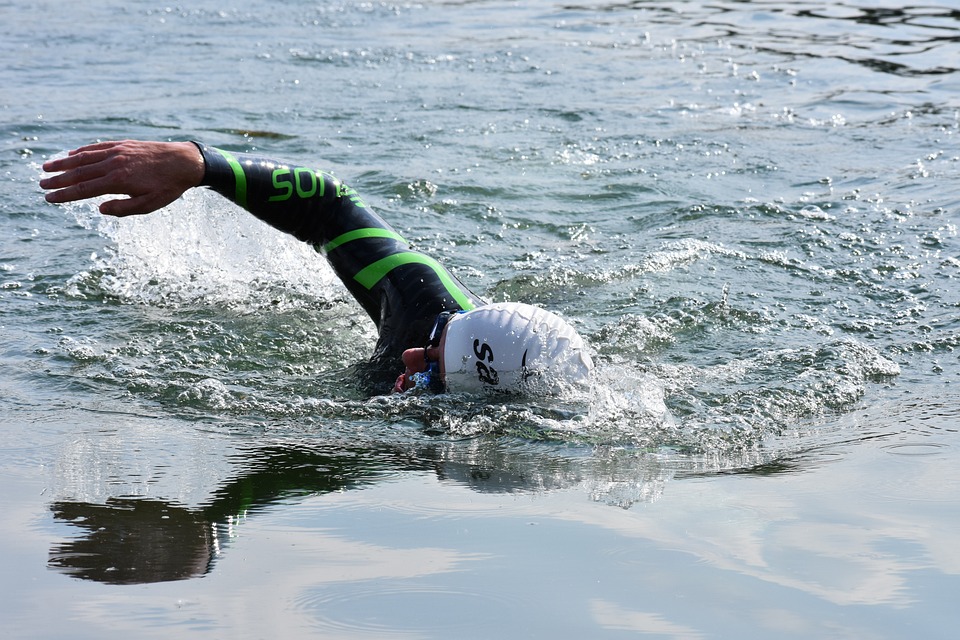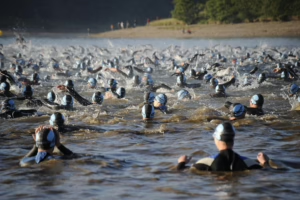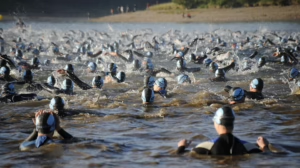The Science Behind Triathlon: How to Train Smart, Not Hard
Triathlon, an endurance sport consisting of swimming, cycling, and running, has gained immense popularity over the past few decades. This growth can be attributed to several factors, including the sport’s inclusivity, the rise of participation events, and the visible sense of accomplishment it offers. However, as the number of participants increases, so does the need for effective training strategies. Traditional training methods often emphasize sheer volume and intensity, yet an innovative approach has emerged focusing on smart training based on scientific principles.
This article aims to delve into the science behind triathlon training, providing insights on how athletes can train smarter rather than just harder. We will explore various physiological principles, the importance of recovery, nutrition, mental strategies, and cutting-edge technology to optimize performance.
Understanding Triathlon Physiology
Energy Systems
Triathletes rely on multiple energy systems to fuel their activities. Understanding these systems helps athletes structure their training effectively.
-
Aerobic System: Dominant in endurance events, this system relies on oxygen to generate energy from carbohydrates and fats. Training to enhance aerobic capacity improves endurance performance, making it crucial for triathletes.
- Anaerobic System: Operating without oxygen, this system provides quick bursts of energy for high-intensity activities. While less crucial in triathlon, it remains important during short, intense efforts such as sprinting at the end of a race.
Coaches and athletes often utilize methods such as interval training to develop both systems efficiently, ensuring the athlete is well-prepared for varied race conditions.
Lactate Threshold
The lactate threshold (LT) refers to the exercise intensity at which lactate begins to accumulate in the blood. Training at or just below this threshold can improve endurance performance. Research indicates that a higher LT allows athletes to maintain faster paces before fatigue sets in [1]. Many triathletes conduct field tests to determine their LT and tailor their training to elevate this critical marker.
Structured Training Plans
Periodization
Triathletes benefit significantly from structured training plans based around the concept of "periodization." This training model divides the year into distinct phases:
- Macrocycle: The overarching yearly training plan.
- Mesocycles: Smaller training blocks, usually lasting several weeks or months.
- Microcycles: Weekly training schedules housed within mesocycles.
By strategically varying training loads, triathletes can enhance their fitness while minimizing the risk of overtraining or injury. The principle of progressive overload ensures that athletes continually challenge their bodies while allowing sufficient recovery periods.
Key Training Components
- Endurance Training: Long, slow workouts to build aerobic base.
- Speed Work: High-intensity intervals to improve anaerobic capacity.
- Strength Training: Focus on compound movements enhances overall strength and reduces injury risk.
- Skill Development: Technique-focused sessions for swimming, cycling, and running.
The Role of Recovery
Contrary to popular belief, recovery is not merely a passive state but an active component of a successful training program. The body needs time to repair and adapt to training loads, and insufficient recovery can lead to diminishing returns or injuries.
Active Recovery
Active recovery involves low-intensity activities that facilitate blood flow to muscles, aiding the repair process without adding significant fatigue. This method can be as simple as a light swim or a leisurely bike ride. Coaches often incorporate this into training plans, ensuring athletes remain fresh for critical sessions [2].
Nutrition and Hydration
Nutrition plays a pivotal role in a triathlete’s performance. Athletes must fuel their bodies adequately to support high training volumes and recovery.
Macronutrients
-
Carbohydrates: The primary energy source for endurance athletes. Training weeks should see athletes consuming higher carb ratios, particularly before long workouts or competitions.
-
Proteins: Critical for muscle repair and recovery. Athletes should incorporate quality protein sources post-exercise.
- Fats: A valuable energy source, especially during low to moderate intensity efforts.
Nutrient Timing
Strategic nutrient timing — knowing when to consume carbs, proteins, and fats — can significantly influence an athlete’s performance. Pre-race meals should be rich in easily digestible carbohydrates to top up glycogen stores. Post-workout, athletes should aim to consume a meal or shake rich in protein and carbs within 30 minutes to optimize recovery [3].
Hydration
Hydration impacts endurance performance significantly. Athletes should monitor fluid intake and adjust based on exercise duration, intensity, and environmental conditions. Sweat rate tests can help personalize hydration strategies.
Mental Strategies
The mind plays a vital role in endurance sports. Mental toughness can often determine the outcome of a race, particularly in the later stages when fatigue sets in.
Visualization Techniques
Athletes can enhance performance through visualization — mentally rehearsing race scenarios, feelings of fatigue, and successful completions [4]. This technique primes the mind, allowing athletes to approach races with confidence.
Mindfulness and Focus
Incorporating mindfulness techniques can help manage stress and maintain focus during training and races. Techniques such as controlled breathing or mantra meditation have been shown to improve focus and reduce anxiety.
Leveraging Technology
With advancements in technology, triathletes today have access to a variety of tools that can help refine their training and performance.
Wearable Devices
Wearable fitness technology can track metrics like heart rate, pace, and power output. Data from tools like GPS watches and heart rate monitors enable athletes to tailor training sessions and monitor improvements effectively.
Mobile Apps
Various applications provide structured workouts, nutritional guidance, and logging features to monitor training and recovery. These platforms often calculate metrics like training load, helping athletes make informed decisions about their training plans.
Data Analytics
The rise of data-driven training emphasizes the need for a detailed analysis of performance metrics. This can inform adjustments in training loads, reveal patterns, and identify areas for improvement.
Practical Applications: Training Smart for Triathlon Success
Begin With a Baseline Assessment
Prior to launching into training, it’s essential for athletes to establish a baseline. This might involve:
-
Fitness Testing: Successful protocols can include VO2 max tests, swim time trials, and run assessments to gauge strengths and weaknesses.
- Setting SMART Goals: SMART (Specific, Measurable, Achievable, Relevant, Time-bound) goals help athletes maintain focus and motivation, ensuring they target areas that will yield the highest performance gains.
Consider Individual Variability
Every athlete is different; age, gender, fitness level, and unique physiological attributes contribute to an individual’s response to training:
-
Customization: Training programs should reflect the individual’s needs and strengths.
- Ongoing Assessment: Regularly adjusting the training based on ongoing performance evaluations is a critical component for success.
Emphasize Quality Over Quantity
Triathletes need to balance long training hours with high-quality sessions. Quality workouts lead to better adaptations and improved performance without the risk of burnout or injury.
-
Focusing on Drills: Skill-based drills in swimming, cycling, and running can yield significant benefits in overall performance while requiring less time than volume training.
- Intelligent Recovery: Implementing effective active recovery routines will set athletes up for success in subsequent sessions.
Conclusion
The science of triathlon training emphasizes a smart approach, focusing on the efficient use of energy systems, strategic training, optimal nutrition, psychological resilience, and advanced technology. The traditional mindset that only emphasizes hard work can lead to burnout, injuries, and a plateau in performance. In contrast, the smart training approach encourages athletes to be strategic, measure progress wisely, and engage in diligent recovery protocols.
Adopting a science-based methodology will not only enhance performance but promote a sustainable journey through the rewarding world of triathlon. With the right tools, techniques, and mindset, athletes can achieve their goals, cross finish lines, and discover what they are truly capable of achieving in their triathlon endeavors.
References
- Smith, J. A., & Thompson, H. R. (2019). "Lactate Threshold and Endurance Training." Journal of Exercise Physiology.
- Brown, L. E., & Lander, D. (2015). "Recovery Strategies for Triathletes." *Sports Science Review.
- Thomas, D. T., et al. (2016). "Dietary Recommendations for Athletes." Sports Medicine.
- Dyer, W. D. (2018). "The Mental Game of Endurance Sports." Journal of Sports Psychology.


























Add Comment